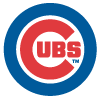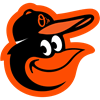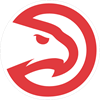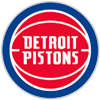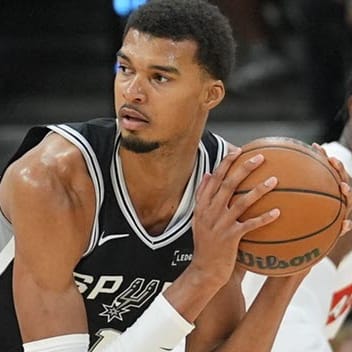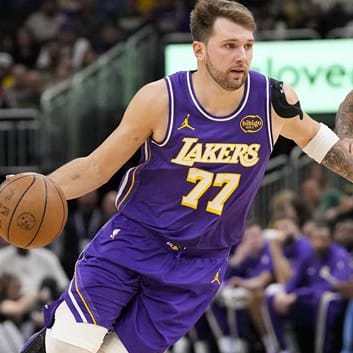Last week I wrote about the importance of injuries to daily fantasy hoops. Hopefully you took notes and avoided starting any of the Cavs' big men when Anderson Varejao was out (Tristan Thompson and Tyler Zeller each netted 4 FPTs on Jan. 30). On the other hand, backup point guard Nick Calathes did nothing other than fill the injured Mike Conley's shoes right up to the brim with 37 FPTs on Feb. 1, further supporting the idea that value guards are worth the DFS gamble.
As someone who has never competed in any athletic contest that actually matters -- HS Varsity doesn't matter -- playing through injury is a totally foreign concept to me. Truth be told, I've had very few injuries at all. A couple broken toes and fingers, no major surgeries or illnesses. When athletes are injured with ankle, knee, groin, shoulder, hamstring or some other variety of sprain or strain, it seems pretty serious to me. Limping and playing good basketball seem at odds with one another. Shooting with a cast or brace on one's hand or finger seems unlikely to be successful. Having just been sidelined with the flu or some other illness for a few days might reasonably leave one weaker or more easily fatigued in a fast-paced game of professional basketball.
As it turns out, I'm wrong about all these things. I've actually suspected it for a long time but stubbornly just refused to believe my eyes. Take a typical night of NBA games, let's say Jan. 25. You've got a nice, full slate of games. Kevin Durant, who is firmly in the must-play-at-any-price discussion this year, had missed the previous game with shoulder soreness. He was a GTD for that day. Shoulder soreness is something I've had. I once had a mildly herniated disc that caused the most intense shoulder pain, so much so that I couldn't even lift my left arm for a few days no matter how much codeine I swallowed. Anyway, Durant had missed one game and was questionable for the next. For $3,000 (three percent) less of my cap, I went with the fully healthy and very studly LaMarcus Aldridge in a very neutral matchup with the Timberwolves. I felt pretty good about it, too, since in my head a gimpy KD and a healthy LMA projected in a similar range of fantasy points. If anything, I was saving money and getting a higher ceiling. Oh man, how wrong was I that night!? Aldridge got 30 FPTs, while Durant filled yet another stat sheet with 72 FPTs.
I am notoriously, to myself anyway, afraid of using injured players for DFS. Given a choice between similar talent, past performance, matchup, etc., I will always choose the healthy guy over the guy coming off injury. Especially in his first game back from injury. I understand there is no one hanging with Durant at this point in the season...he averages 51.7 FPTs and has had 11 games with >60 FPTs, so by similar talent I mean also in the elite tier. When you're justifying spending over 20 percent of your salary cap on a player, you don't want any caveats or potential knocks on his performance. You're paying for the high floor as much as the non-existent ceiling.
My fears with players coming back from injury are two fold. First, the injury is smoldering, keeping the player in the game but not at his full potential. He may hustle less, get fewer rebounds and steals, or take fewer shots. He may shy away from contact, even inadvertently. If the game isn't close, he'll be first in line to rest. Moreover, he may aggravate the injury and have to leave the game.
Let's look at some recent examples. I picked 18 DFS faves who have recently missed time or left games with injury, resulting in a questionable or GTD designation for their first game back. The table shows the injury, date of the first game back, the FPTs scored in both his first and second outings, and the players' season average FPTs. I tried to include players that had played most of the season, that we know who they are and what they can do by now, and also players that are commonly rostered in DFS.
Name | Injury | Date played | Score 1st game back | Score 2nd game back | Season average |
Durant | Shoulder | 25-Jan | 72 | 63.5 | 51.7 |
Love | Ankle (GTD) | 1-Feb | 70 | 50.5 | |
Melo | Ankle | 2-Jan | 52 | 35.75 | 44.8 |
A. Davis | Finger | 1-Feb | 54.5 | 39.25 | 43.4 |
Harden | Thumb | 1-Feb | 37.5 | 39.5 | |
Noah | Ill | 29-Jan | 41.75 | 43.5 | 35.6 |
Dragic | Elbow (GTD) | 1-Feb | 35 | 34.6 | |
R. Gay | Achilles | 29-Jan | 32 | 59 | 34.3 |
DeRozan | Ankle | 31-Jan | 21 | 59 | 33.5 |
Hayward | Hip | 21-Jan | 45.25 | 32 | 33.1 |
Wade | Knee | 26-Jan | 19 | 19.75 | 32.8 |
Teague | Ankle | 31-Jan | 27 | 41 | 30.9 |
M. Gasol | Knee | 14-Jan | 16.5 | 4.25 | 28.9 |
Deron Williams | Ankles | 20-Jan | 21.75 | 26.75 | 27.9 |
T. Jones | Thigh | 24-Jan | 16.25 | 20.25 | 26 |
T. Evans | Ankle | 18-Jan | 20 | 25.5 | 25.2 |
T. Chandler | Ill | 14-Jan | 11 | 28.5 | 24.3 |
Beverley | Hand | 20-Jan | 26.5 | 30.5 | 21 |
The elite players all posted above-average fantasy totals their first game back from injury, or when they were a GTD. The sample size here is small but clearly suggests that if the Stud is playing, you're safe to start him. I missed on KD's big game but kept Love in my Feb. 1 lineups, despite his questionable ankle. That worked out nicely. Ty Lawson and DeMarcus Cousins also returned to the court Monday night, going for 27 and 25 actual points, respectively, along with nice contributions in every category. Monster fantasy nights for both after missing time. The studs are clearly safe to start if they play.
The next tier of players, averaging 30-40 FPTs, were more variable. With the exception of Wade, they generally performed better their second game back, though nearly half reached or exceeded their season average in that first appearance. Wade is a tough case to analyze because many of his performances don't reflect his potential (Monday night excepted). Honestly, he's a player I rarely, if ever, roster for DFS. The way he's managed is great for him as a player, but it's terrible for fantasy. Meanwhile, Michael Carter-Williams returned Monday night with 32.5 FPTs, slightly less than his 37.8 average on the season. In keeping with the trend, mid-tier guys are pretty safe, but temper expectations and know there is some risk involved.
The 20-30 FPTs per game players all underperformed in their first game back, except Beverley, who missed the most time of all these guys and also had the lowest season average. All improved in their second game back except Marc Gasol, who had his big game in the third one and has been pretty steady in the meantime. Given the numbers above, this looks like a situation where you want to wait a game or two before jumping back in on a guy.
We should be leery of making sweeping conclusions based on a very small sample. The trends, however, are there and deserve our attention. The more information you have, the better decisions you make. Injuries are constant in professional sports, and if you play DFS, they contribute greatly to how you construct a lineup (discussed more last week). Despite the fact that these sprains, strains, and contusions would hobble most of us for weeks, by and large, we have to trust that when a guy takes the court, he is ready to ball. This is more the case for elite tier players but holds true for most of the guys in the next tier that you might be looking to roster.
Anderson Varejao, Mike Conley, David Lee, Kemba Walker, Pau Gasol, Nikola Pekovic, and Jameer Nelson are all due back this week or next, meaning they're going to be your tough start decisions. Kyle Lowry left Monday's game with knee pain, so his situation will be one to monitor, too. Those that have good matchups will be particularly tough to pass up. While the results above suggest you needn't (shouldn't!) fade the truly elite guys, these fellas fall into the second tier. Again, the data indicates that you can expect the performance to be near the season average in the first game back. If the player's salary has dropped while on the shelf, it probably makes sense to take the chance on a good matchup. If the salary is still high, and you can find another second-tier option with a higher ceiling or better matchup, I'm probably still going that route.
I really struggle with this dilemma on a regular basis. Some part of me is more comfortable missing out on a potential good game from a GTD than risking a potential five-minute, zero FPT performance (which never happened in the games I researched for this article). In a sense, it can be traced to our natural human tendency to avoid losing, another topic I've touched on previously. Different people probably experience this bias to different extents. I think this might be a good situation in which to deploy more than one lineup as well, if that's something you're not already doing. I'm curious to know how you guys treat GTD and players in their first game back from injury - jump right in or wait and see? Comment below or find me on Twitter!







